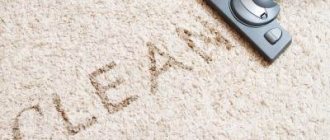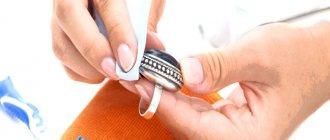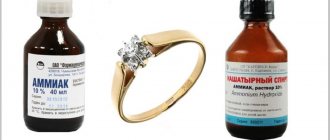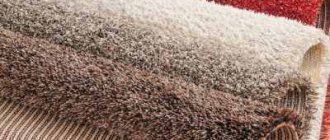Start by inspecting the product. Determine the scope of work: you just need to brush off the dust and lint, or there is a big wash ahead. Study the label, find out what material the coat is made of. If the composition is mixed, rely on the presence of natural fibers. Synthetic additives improve the fabric and make it easier to care for, while materials of plant and animal origin are more demanding to clean.
Pay attention to the manufacturer's advice: what temperature should the water be, is it possible to use a washing machine, how to iron and dry the product. Don't neglect this information. Proper care will extend the life of your coat and maintain its original appearance.
How to clean a coat - choice of products
When choosing how to clean a coat at home, you need to take into account general recommendations that apply to specific types of fabrics. This information is summarized in the table below.
| Fabric type | Dry cleaning | Wet cleaning | Machine washable |
| Drape | Recommended | Used to remove stains | Not recommended |
| Cashmere | Allowed | Allowed | Machine washable for some types of cashmere |
| Tweed | Preferred | Used to remove stains | Hand washable |
| Wool | The best option | Allowed | Machine washable in the appropriate mode and using suitable cleaning products. |
| Suede | Suitable option | Possible subject to compliance with all rules | Washing allowed for natural suede |
| Leather | Not applicable | Recommended | Prohibited |
| Polyester | For cleaning dust | Recommended | Not recommended, but not prohibited either |
| Neoprene | Doesn't give results | Not applicable | Allowed in the typewriter |
When choosing a cleaning method, you need to pay attention to the following:
| Material | Cleaner |
| Drape | Rye bread (for dust) and detergent (for dirt) |
| Tweed | Vacuum cleaner (for dust) and dish detergent |
| Cashmere | Gasoline + hair conditioner (helps freshen coats), talc (can remove greasy stains), soap solution + ammonia (from sweat marks), glycerin + ammonia (from unknown stains) |
| Wool | Dry cleaning and gasoline |
| Leather | Water + alcohol + liquid soap (to remove traces of dirt), vinegar or alcohol + citric acid + glycerin (to remove traces of salt) |
| Suede | Suede cleaning sponge, eraser, lotions, specialized cleaning foams (Dividik and others), salt stain remover (De Salter and others) |
| Faux suede | Washing powder and hand wash |
| Polyester | Salt and borax |
| Neoprene | Machine wash on delicate cycle |
Minor stains do not require washing. In such cases, the coat can be cleaned by wiping it with a dry or damp (suitable for leather) sponge.
In what cases should you contact a dry cleaner?
Despite all the possible manipulations for cleaning coats from dirt at home, there are times when it is best to turn to professionals in their field - modern dry cleaning. When there is a possibility of permanent damage to the product, which will make it unfit for wear.
And, you see, this will be very unpleasant. So when is it better to go to the dry cleaner and not try to handle it yourself?
- In cases where the label indicates that the product should be dry cleaned only.
- White coat. It is better not to risk carrying out any manipulations, as they can ruin the color of the product.
- If you can’t get rid of the stain at home.
- And there are rare cases when a coat is accidentally stained with fuel oil or machine oil. It is better not to try to clean such stains yourself.
Of course, if you are not confident in your abilities or are simply afraid of ruining an expensive item, it is better not to take risks and entrust the product to professionals. Then you will definitely sleep peacefully.
We hope that our advice will help you extend the life of the product so that it pleases you for as long as possible.
How to make stockings from tights
How to choose a men's coat
How to clean a coat made from natural fabric
Regardless of the type of material made, each coat must be prepared before cleaning. To do this you need:
- empty things from pockets;
- shake your coat on the balcony or street;
- determine the location of the spots;
- Clean clothes from dust and debris.
Afterwards, you can start cleaning your clothes yourself, using a method that suits the specific material.
Drape
When cleaning drape made from natural wool, it is recommended to do without washing. Prolonged contact with water causes the item to greatly decrease in size.
If absolutely necessary, you can wash a drape coat in a machine, setting it to delicate mode and a temperature of 30 degrees. But this procedure can be carried out no more than 1-2 times.
If you need to remove traces of dirt from the surface of a drape coat, then in such cases you can use a quick cleaning method. To clean such clothes you will need:
- Dilute a small amount of dishwashing detergent in water (until foam appears).
- Soak a sponge in the mixture and wipe the stained area.
- Leave the coat for 5-10 minutes, then wipe with a sponge soaked in water.
When rubbing away dirt, it is recommended to move from the edges to src=”https://you.cleaning/wp-content/uploads/2020/01/pravilnyy-metod-chistki-palto.jpg” class=”aligncenter” width=”700″ height =»401″[/img]
Carpet cleaner helps clean a light-colored drape coat. In this case, after treatment with a moistened sponge, the clothes should be left for half an hour, hung on hangers.
Cashmere
Cashmere is obtained from wool collected from the sides of mountain goats. This material is soft to the touch. Because of these features, cashmere has strict care requirements. Therefore, it is highly undesirable to conduct experiments with this tissue.
Before trying a new product on a leather coat, it is recommended to apply the substance on the reverse side and observe the reaction.
When cleaning products of this type, it is also necessary to take into account both the characteristics of the stain and the color of the clothing. To clean your coat collar you will need:
- Rub the stained area with a cotton swab dipped in soapy water.
- Wipe the stain with an ammonia solution.
- Remove applied products with a cloth soaked in water.
An adhesive tape that needs to be glued to the fabric and pulled sharply can help remove dirt, dust and lint from a black coat. And to restore color, it is recommended to wipe the cashmere with a cotton swab dipped in strong tea.
Tweed
Tweed is another type of fabric made from natural wool. This material has similar maintenance requirements as the previous ones.
To remove dirt and other marks from a tweed coat, it is recommended to use the dry cleaning method.
The sleeves of clothes made from natural wool wear out quickly. A mixture of table salt and ammonia, taken in a 4:1 ratio, helps correct this defect. This composition should be applied to the abrasion and left for a minute. Then just brush off the mixture with a brush.
The following fairly effective method will help you clean a white tweed coat from stains of unknown nature:
- Add a tablespoon of cosmetic liquid soap to 0.5 cups of warm water.
- A tablespoon of ammonia is mixed in the resulting solution.
- The product is applied to contaminated areas and left for 10–15 minutes.
- The stain is wiped with a damp cloth.
If a tweed coat is heavily soiled, the item can be washed by hand at temperatures up to 30 degrees. It is not recommended to keep the product in water for a long time.
After cleaning, the coat must be hung on hangers.
Coats made from other types of wool
The rules for cleaning coats described above also apply to clothes made from other types of wool. To remove stains and other traces of dirt, you can use any of the above methods.
If you have doubts about the chosen method, then first you need to use the least aggressive substance or product (soap solution, talc to remove grease stains, and so on).
To clean items made from natural wool, it is also recommended to use a cotton cloth soaked in plain water.
Leather
The skin does not tolerate prolonged contact with water and mechanical damage. It is not recommended to wrinkle this material frequently, as pronounced and irremovable defects form on the surface over time.
A leather coat must be wiped with a damp cotton cloth at regular intervals (every 1-2 weeks). This procedure helps maintain the original appearance of the material.
Unlike other previously described materials, salt stains often form on leather coats. To remove white stains, you need to treat problem areas with a cotton pad soaked in table vinegar.
Suede
A suede coat stands out due to its large fibers, which give the garment an attractive appearance and create a soft texture. Clothes made from this material require delicate washing.
A suede coat must be periodically combed with a special brush, observing the direction of the fibers.
Clothing of this type often shows stains after rain. To clean such stains, you will need to rub the problem areas with an eraser and then with a crust of rye bread. After the procedure, the treatment area must be ironed by running the iron from the wrong side.
Methods for cleaning suede clothing
Rubbing over the pile with a cotton swab soaked in ammonia will help clean the capricious suede from dust.
To remove greasy marks, sprinkle starch for 2 hours. Then remove with a brush. Or prepare a soda solution in milk (a teaspoon per 100 ml of liquid). Soak the stain and after 5 minutes carefully wipe with a brush.
If creases appear, hold the product over steam and dry it on a horizontal plane. Salt stains can be removed with a soft school eraser or a bread crust.
You cannot wash a suede coat: the fabric cannot be rubbed or twisted. The maximum that is possible is to rinse in warm soapy water and then with clean water. Without squeezing, allow excess water to drain and lay the product on a soft terry mat.
Faux suede cannot be washed either. If dirt appears, apply thick soap foam and remove it with a sponge after two minutes. Remaining marks are removed with a towel.
We recommend reading: No to paint: how to save your favorite jeans
How to Clean a Faux Fabric Coat
Artificial fabrics are less demanding in terms of care compared to natural ones. However, when cleaning coats made from such materials, a number of conditions must also be observed.
Polyester coat
A polyester coat does not withstand high temperatures. Moreover, such things are able to retain their original shape for a long time and practically do not wrinkle.
Polyester products cannot be placed in electric dryers, machine washed at temperatures above 40 degrees, wrung out or twisted.
A stain remover or salt can be used to remove dirt from a coat by pouring it onto the stain and waiting for half an hour. At the end of this time, the problem area must be washed with a soap solution (3 tablespoons of liquid soap per 2 liters of water).
To clean complex and stubborn stains from a polyester coat, you need to apply a 10% borax solution to the stained area, and then rub it with lemon juice. At the end of the procedure, the area is washed with a damp cloth.
Neoprene coat
Neoprene is an artificial rubber that covers clothing on both sides. This material has water-repellent and antibacterial properties. Also, neoprene does not wear out or wrinkle.
You cannot wear clothes made of this material for more than three hours. Neoprene does not allow air to pass through, thereby preventing the skin from “breathing”.
You can clean a coat made of this material in a washing machine in the “Delicate Wash” mode at a temperature of 30 degrees. It is recommended to use gel instead of powder. You need to wash your neoprene coat twice: on the outside and on the inside.
Things to remember
- To clean the collar, use hydrogen peroxide, ammonia, vinegar and soap solution. They help in removing stains of various origins.
- Don't wash unless absolutely necessary. Clothes such as coats, regardless of material, require careful handling. Products should only be washed if absolutely necessary.
- Use professional products. If conventional methods do not help, you should use a more radical remedy - a stain remover.
How to remove stains
Most methods for removing traces of dirt are suitable for any material from which the coat is made.
Traces of food, tea or coffee
To clean such traces, mixtures of alcohol and vinegar (taken in equal proportions) or glycerin and ammonia (2 tsp and 1 tsp, respectively) are used. Each of these products needs to wipe away traces of tea, coffee or food. Fresh stains can be removed using a soap solution.
Traces of fat
To remove fat from a bolognese coat or other materials, including natural fabrics, you need to apply the following to the problem area of your choice:
- talc;
- potato starch;
- baby powder.
Each of the described substances must be left on the greasy stain for at least 10 hours, and then brushed off.
In difficult cases, gasoline is used during cleaning. This method is usually used for natural fabrics. To remove a greasy stain, you need to soak a cotton pad in gasoline and wipe the marks. Then you need to pour talc onto the problem area and follow the steps described above.
Dirt
To clean a white coat from dirt, it is recommended to use a soap solution. In other cases, you can use a wet cotton cloth.
Spots of unknown origin
A mixture of a 10% solution of ammonia and glycerin, taken in equal proportions, helps with foundation and other traces whose origin cannot be determined. Use this product to wipe the stained area several times and remove any residue using a damp cotton cloth.
Why does he get dirty?
The collar is constantly in contact with the skin of the neck, which is equipped with sweat and sebaceous glands. These glands are exogenous, i.e. secrete out. You have noticed this more than once: during heavy physical activity, or during excitement, the neck sweats first. Accordingly, the collar of the garment becomes contaminated. The coat will instantly lose its appearance if the collar is dirty or greasy.
The second problem with the collar is stains from powder and foundation. If a woman constantly uses foundation, pinkish spots often adorn the collar of her drape coat. Some fashionistas adapt to protect their collar with a scarf. After all, after washing, the scarf will quickly acquire its original appearance. But a collar made of drape is unlikely.
Additional recommendations
If after cleaning the coat emits an unpleasant odor, then the contaminated area needs to be treated:
- activated carbon powder;
- soda;
- vinegar;
- laundry soap.
When drying, coats should be hung on hangers or laid out horizontally (depending on the manufacturer's recommendations), avoiding contact with direct sunlight and heat sources (radiators, electric dryers, etc.).
When is the best time to go to the dry cleaner?
Specialized clothing cleaning services will be required if:
- white coat;
- requires cleaning from difficult stains (machine oil, paint, etc.);
- stains have formed on clothes that cannot be washed using any of the above methods.
It is recommended to dry-clean coats that require specialized procedures (color restoration, etc.).
Tips for caring for your coat
To avoid constant cleaning of your coat and maintain a presentable appearance, you must follow the following care rules:
- hang coats on hangers;
- store the item in a special case;
- always dry after rain and cleaning;
- clean stains immediately after they appear;
- remove dust and small debris every week.
Coats are made from various materials (natural and artificial), each of which has its own care requirements. This item of clothing must be cleaned taking into account the general recommendations of the manufacturer and the type of fabric from which the item is made.
Where to begin
You should always start with an inspection. Perhaps everything is not as bad as you think, and you can get by with dry brushing and removing individual stains. You will still have to clean the coat before washing or wet cleaning. Therefore you need to act like this:
- Choose comfortable, durable hangers so that they do not sag under the weight of the coat and do not wrinkle its parts, place the item on them and take it to a well-lit place.
- Inspect the coat from all sides, not forgetting the hem and back of the collar, and identify any current problems. By the way, if the coat has a belt, then it also needs to be cleaned.
- Dry and brush to remove all dust. There is no need to be lazy; the entire product can be processed. Even if visible dust is not visible to the naked eye, it is still there. And when in contact with soap suds or water, it can behave completely surprisingly - and unpleasantly.
That's all the preparation. During the process, some other minor defects were probably discovered, perhaps cuts, tears, etc. It is better to eliminate them before starting cleaning.











